In January, we rest ... or not!
One might think that January is a restful month for the market gardener!
It is true that physically it is not the most intense month but on the other hand it is the month where a large part of the success of the coming season is at stake. Indeed, January is the month where we plan the season so that we then just have to execute the plan! Good planning is not the guarantee of a successful season but, on the other hand, poor planning is the guarantee of a chaotic and therefore unprofitable season.
Indeed, one of the major difficulties of diversified market gardening is growing a lot of vegetables on a small area when conventional agriculture grows few vegetables on very large areas. Therefore, optimization of processes and rigorous planning of tasks is essential to avoid getting lost in the multitude of tasks to be carried out and to be profitable (which we will certainly not be in the first year 😏).
The elements to plan are, in order, the vegetables to be grown, the planning of the chosen crops, the crop rotation and finally the technical itineraries. Quite a program!
Quite a program!
The choice of vegetables
For this first year, we chose to take a fairly wide range of vegetables to test our ability to grow and sell them. We clearly don't make it easy for ourselves but we consider this first year as a life-size test - so no pressure, well not too much 😉.
We also picked some vegetables that we found fun and interesting to grow, like mini bell peppers, unique heirloom tomatoes, and less common vegetables. In summary, we also treated ourselves a bit. But let's keep a little mystery for now 😁
Even though we have saved seeds from last year, we have decided to order from a professional seed supplier all the seeds for the vegetables we will be growing this season. It's a certain budget, but the reasoning is that for the first year we want to have the best possible seeds - selected, organic, and resistant to certain diseases. In the following years, we will harvest as many seeds as possible to capitalize on this initial investment.
All seeds come from Agrosemens. If you want to treat yourself, take a look at their catalog.
Crop planning
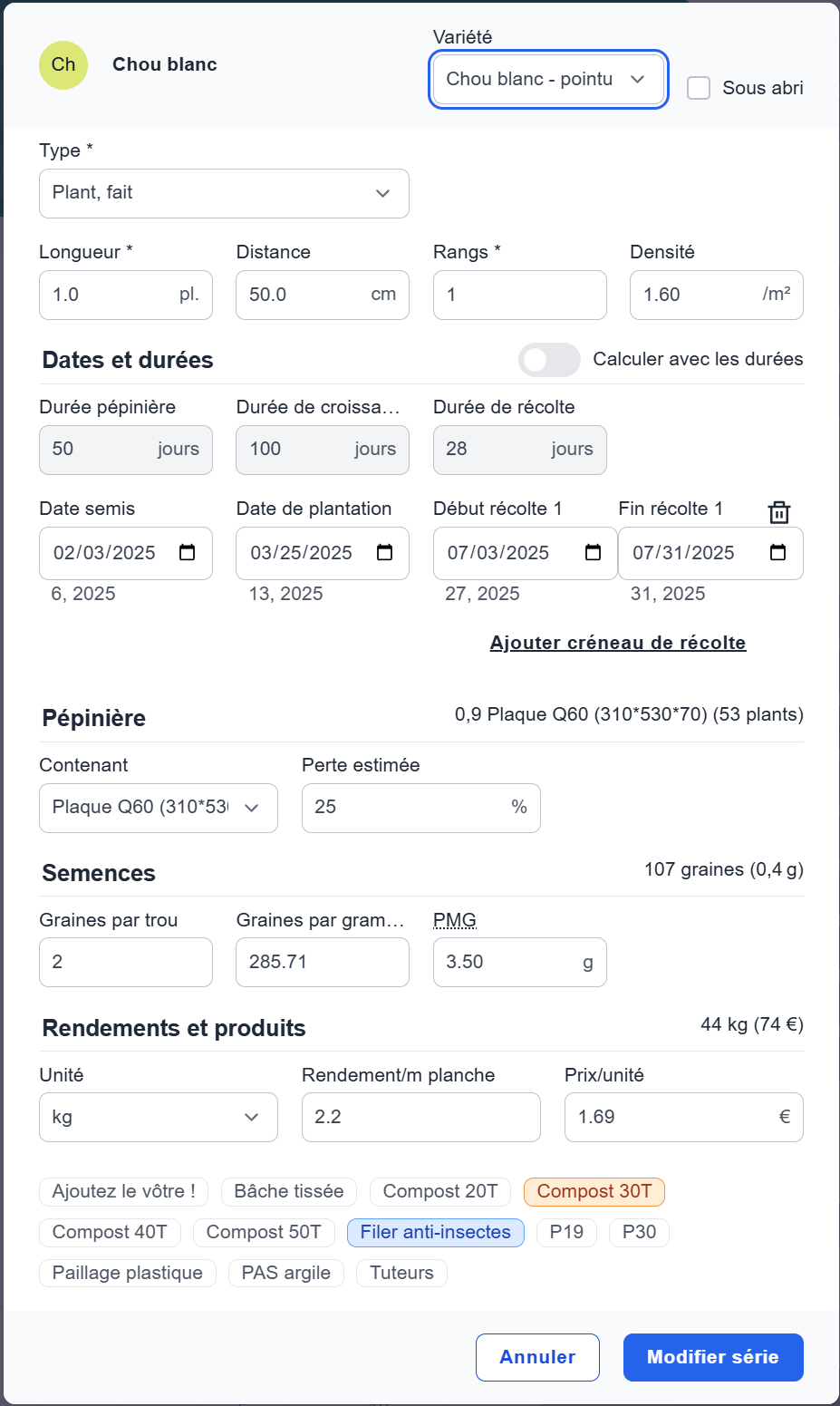
For this step, we use Brinjel, a specific App for market gardening (yes, it exists!!!).
The first step was to define the vegetables to be grown as well as their cultivar - great new vocabulary word 🤯. The cultivar is a plant variety selected by humans. For example, we are talking about Nantaise carrots, Romanesco cauliflowers or Granny Smith apples.
Then, for each cultivar, we defined its technical characteristics, primarily the cultivated area, the sowing and harvesting periods, as well as data on the seeds and the yield of the crop.
Once everything is encoded, this gives a Gantt with all the crops and the sowing, cultivation and harvest dates. For example, the Pointed White Cabbage of Châteurenard is sown in the nursery during week 6, transplanted into the ground in week 13 and harvested from week 27
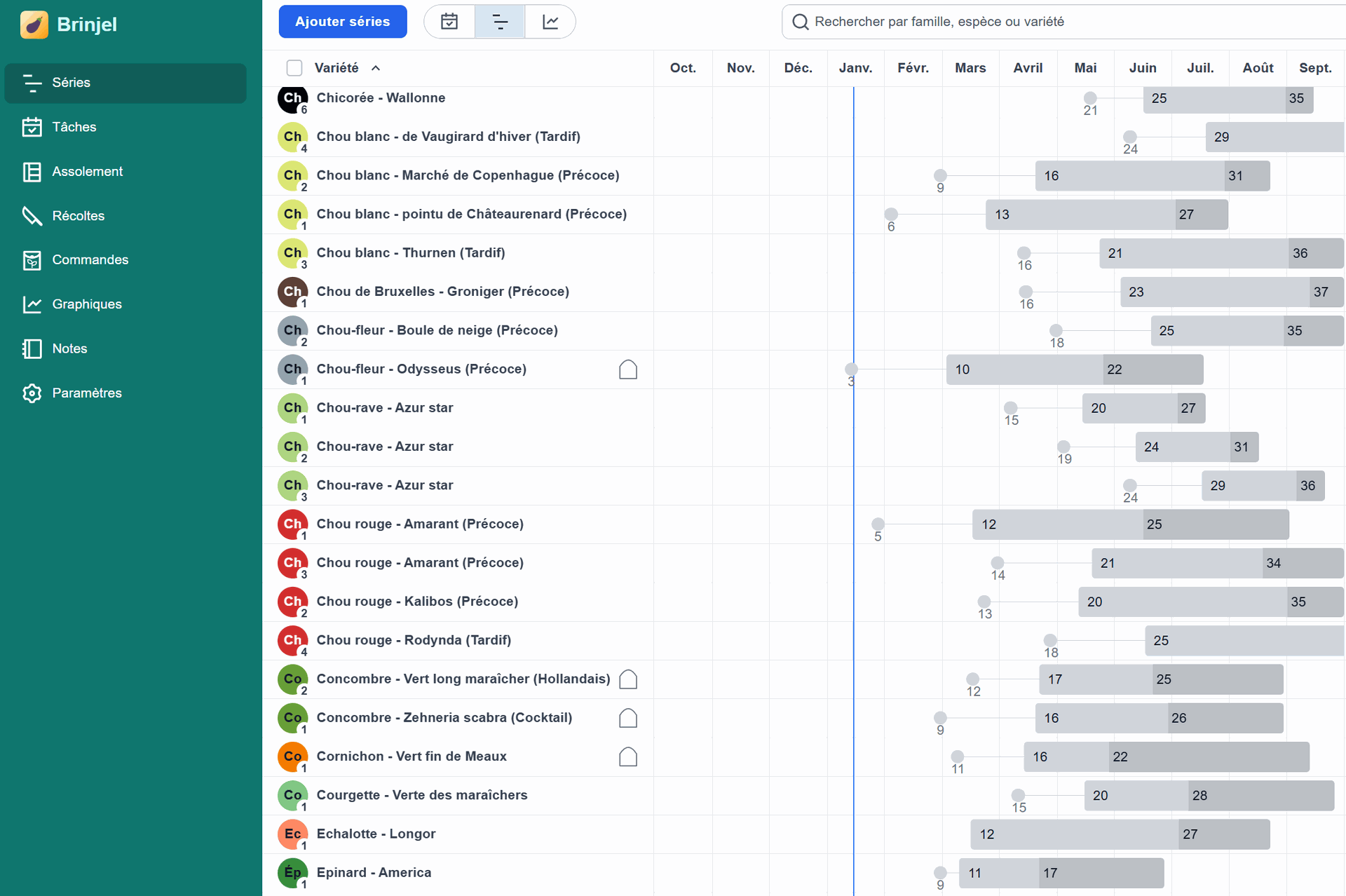
We must distinguish two main types of culture. Vegetables which are planted once and then harvested little by little, such as cabbage, tomatoes, eggplants, etc. And on the other hand, vegetables which are harvested all at once and must therefore be planted in series at regular intervals . For example, plant lettuce every 15 days to ensure continuous yield throughout the season.
Crop rotation and permanent beds
Like many market gardeners, we were inspired by the permanent bed techniques explained by Jean-Martin Fortier in his book Le jardinier-maraîcher. This technique is based on three principles
First of all, standardize the spacing of the crops and the size of the planting beds, namely the crop spaces. Here, the planting beds are all 20m long and 80cm wide with a space of 45cm between the beds.
Then the beds are grouped in a garden with crops that have identical needs in terms of amendments, protection, and maintenance. For example, one garden groups the Fabaceae - Peas and Beans - while another garden groups the Alliums - Leeks and Onions.
Finally, these boards are called permanent because once defined, they stay in the same place forever. The permanence of the boards offers the following advantages.
- The deep work of the soil is only done at the creation of the permanent bed.
- They have a fairly small width - 80cm - so that they can be worked without having to step on them and therefore avoid soil compaction.
- Soil work is reduced to its strictest expression (no plowing or digging) because the soil is maintained by crops, companion crops as well as plant cover during the fallow period.
- Soil fertility is maintained throughout the seasons by a targeted addition of amendments.
- the clear demarcation of cultivation zones facilitates crop rotation as well as watering, weeding and the installation of protection calibrated for the dimensions of the beds.
- The unit for calculating the profitability of a crop is the board, which facilitates calculations as well as comparison between crops.
At the Compagnie du Radis, we have defined 8 gardens made up of 8 plots. Our plots are therefore 16m², and a garden has a total area of 200m², of which 128m² is cultivated. In total, our cultivated area is 1024m² (for the computer scientists reading this, this number is not intentional. Probably a good omen 😏)
The gardens are...
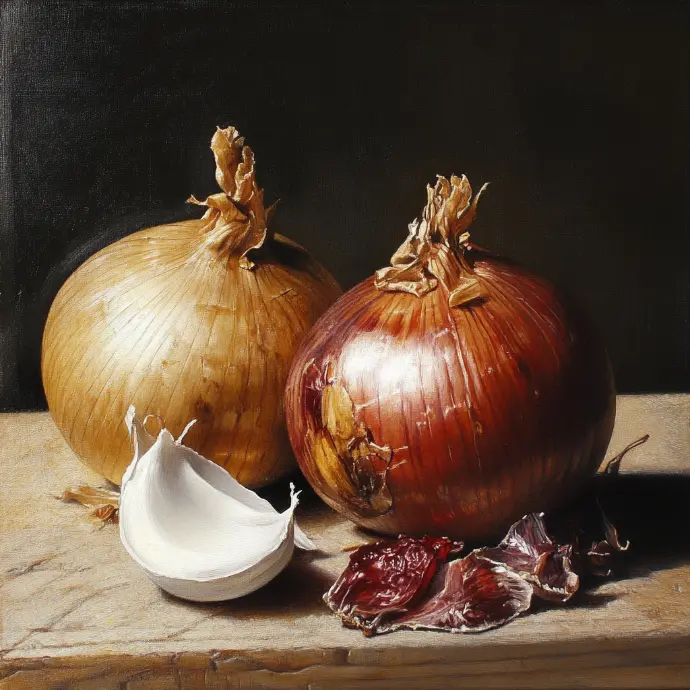
Alliacées(1)
A garden with Onions, Shallots, Leeks
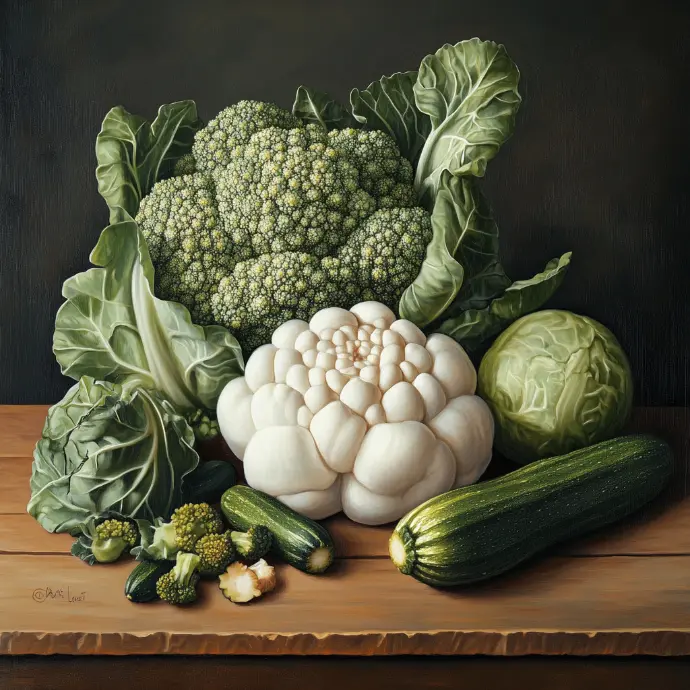
CuCuBra (3)
These three hybrid gardens bring together Cucurbitaceae (Squash, Pumpkin) and Brassicaceae (Cabbage, Turnip, Radish). Why? We talk about it below 😉
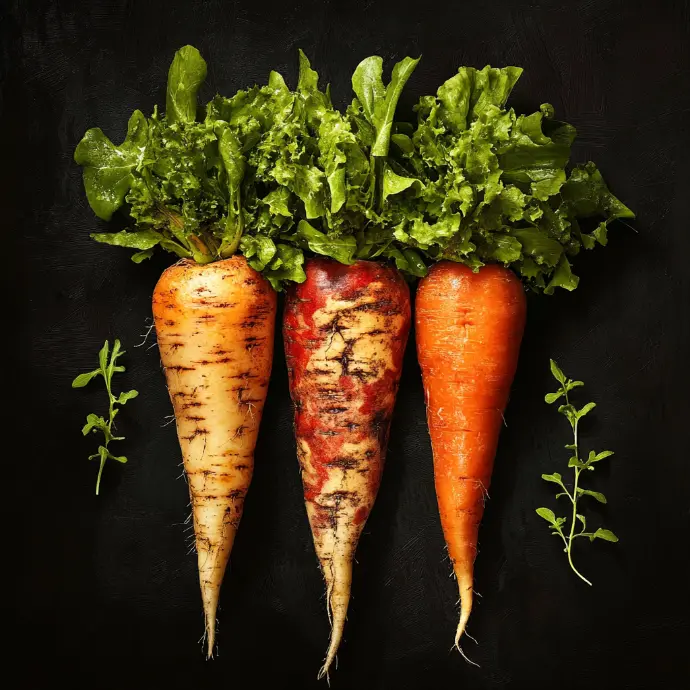
Verdures-Racine (1)
2 gardens with what does not fit in the two previous gardens. They include undemanding crops such as Beets, Carrots and Salads.

Serre-Tunnel (1)
1 garden with Solanaceae, which are plants that require more heat and protection from the elements. These include the classic Tomatoes, Peppers, Eggplants, and Cucumbers.
The CuCuBra case
We mixed these two families of vegetables in three gardens, spaced from each other, for two reasons. Firstly their needs are quite similar and secondly to limit the spread of diseases and make life difficult for pests.
Indeed, if a cabbage is affected by cabbage powdery mildew, it will spread to other cabbages but not to squashes, for which the form of the disease is different. Similarly, cabbage flea beetles (white butterflies) do not attack squashes.
In the same spirit, these three gardens are distant from one another.
The complete crop rotation is found here
The layout of the vegetable garden
In addition to the gardens, the vegetable garden will host green areas, a garden shed, chickens, ducks, and two ponds. But we will talk about all of this in another blog! The plan for our vegetable garden is public and visible here
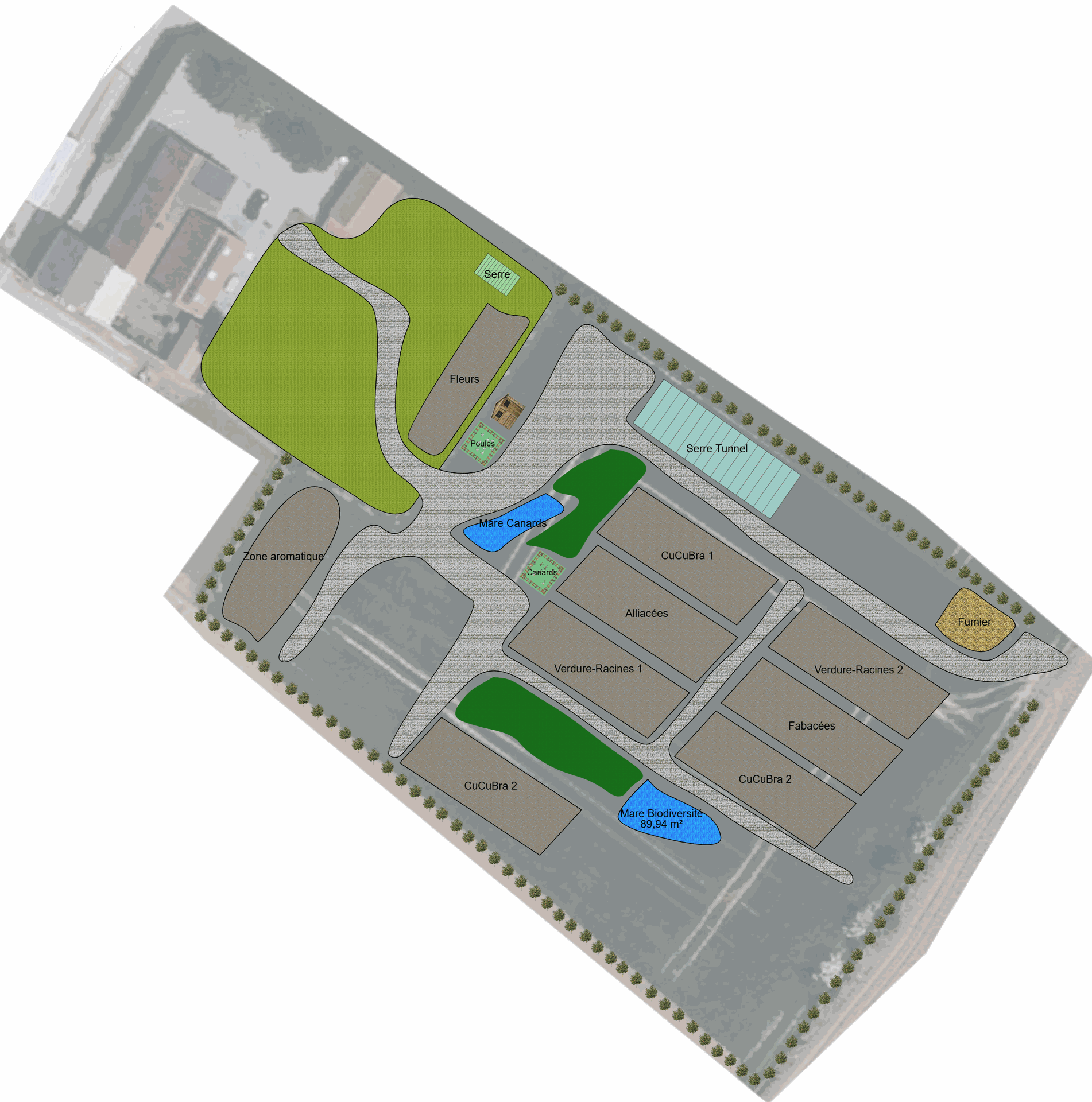
Technical itineraries
A technical itinerary is a set of operations to be carried out to cultivate a vegetable. Certain vegetables require, for example, additions of amendments, the installation of a protective anti-insect cloth or regular weeding.
We are not going to go into detail about the technical routes here. This will be the subject of another Blog. Yes one more 🤔
Conclusion
Here is the result of the planning work
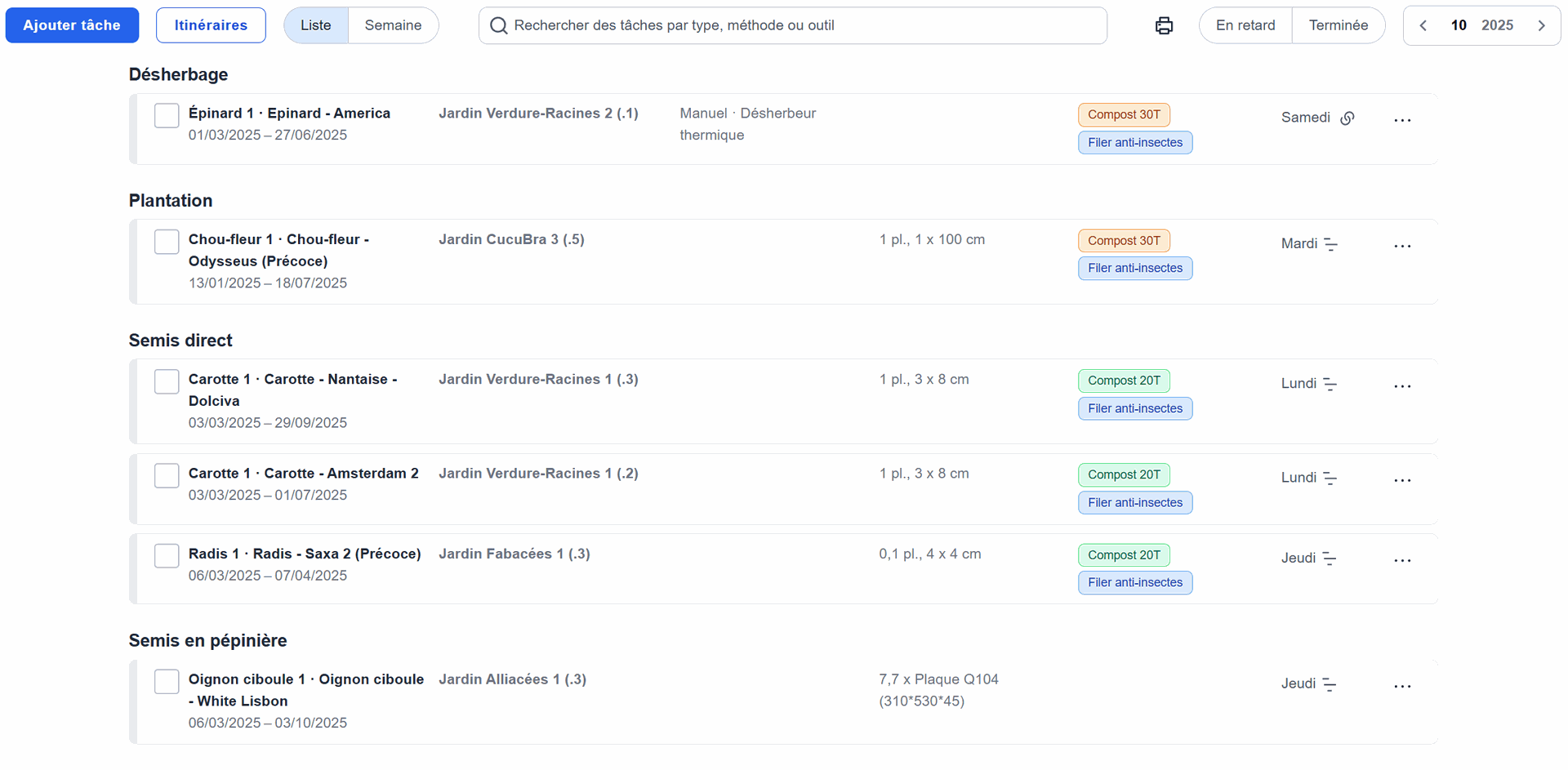
We now have a roadmap and tasks to complete each week.
All that's left to do is!!! 🤞